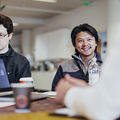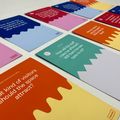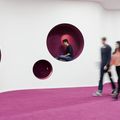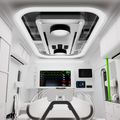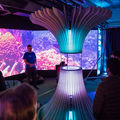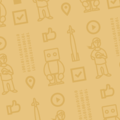The course addresses visual and narrative approaches to human-centred design to illustrate users, use, concepts and contexts for reflective design, collaboration, evaluation and persuasion purposes. The course gives students skills in illustrating and explicating different aspects of products and the use of products and services by visual and narrative means. The students learn to choose, compose and apply design artefacts for different communication purposes that are necessary for designing material and immaterial concepts and solutions for socio-technical systems. They learn how to create design artefacts that invite contributions and create stakeholders' commitment, material for iterating and annotating the progress of design, to adjust the angle of scrutiny by choosing appropriate representations, to clarify complex relationships and isolate critical issues, to convince their audiences and to justify their solutions, and to contextualize design concepts. They learn how to use visual media to support oral communication and how to create self-standing presentations with media such as drawings, photos, videos, interactive demonstrations, physical props or mock-ups.








